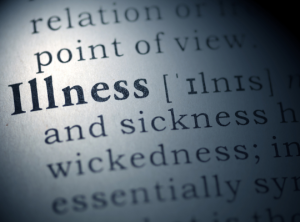Food safety can be a big concern and problem in your home and across the world. Practicing the basic principles of food safety is key to avoiding a foodborne illness. We want you to be informed and educated about food safety.

In the United States, 48 million people on average experience foodborne illness and approximately 3,000 people die every year (CDC). Globally, an estimated 600 million people — almost 1 in 10 people in the world — get sick after eating contaminated food and roughly 420,000 people die every year (WHO).

I love teaching people about food safety and get satisfaction when someone says they learned something new, and are now going to start changing their behavior to prevent a potential foodborne illness!
Real examples from participants I have taught:
- I am not going to wash my chicken before cooking it anymore, even though my mother and grandmother taught me to do this.
- I am going to stop wiping and cleaning my table with my personally used table napkin. I will now clean and sanitize my kitchen table properly with a separate paper towel or designated cleaning cloth.
- I didn’t know bacteria could survive the freezing process. I am going to now cook food to a safe internal temperature after freezing, using a food thermometer, as this is the best way to kill bacteria.
- I am going to wash my hands with soap and water for at least 20 seconds before, after and during my cooking. I am not going to skip this step anymore to save time and risk getting sick.
- I am going to keep my pets out of the kitchen when I am preparing food and put them in the bedroom with the door closed, while I am cooking.
- I plan to put my food away and refrigerate it after two hours. I am no longer going to let it sit out for 5-6 hours on my dining room table during family celebrations.
- I am no longer going to determine if my meat is fully cooked by color. I am now going to use a food thermometer to determine if the meat is fully cooked, based on the recommended internal and safe temperature.
- I am now going to gently wash and scrub my whole cantaloupe under running water and dry it with a paper towel. I am going to do this before cutting it and eating it to remove any harmful bacteria that may be on the outside of the rind.
I am so happy when someone commits to positively changing their behavior. These basic principles need to be followed: clean, separate, cook and chill. https://www.fightbac.org/
CLEAN – Make sure to wash your hands with soap and water for 20 seconds before and after preparing food. This practice will help you and your family to avoid getting sick from germs and bacteria. CDC/Handwashing- https://www.cdc.gov/handwashing/index.html
SEPARATE RAW AND COOKED FOODS – Make sure to separate raw foods (fresh vegetables or raw chicken) from cooked foods (grilled chicken). Do not use the same cutting board you previously used to prepare raw meat, without washing and sanitizing in between, so then you can safely chop raw vegetables.
COOK FOODS TO A SAFE INTERNAL TEMPERATURE – The only way for families and consumers to kill bacteria, is to cook raw meat, poultry, fish, seafood, and egg dishes to a safe minimum internal temperature. Use a food thermometer to ensure food has reached the recommended temperatures, which will kill any harmful bacteria. https://www.fsis.usda.gov/wps/portal/fsis/topics/food-safety-education/get-answers/food-safety-fact-sheets/safe-food-handling/safe-minimum-internal-temperature-chart/ct_index
CHILL FOODS and REMEMBER THE TWO-HOUR RULE – Do you know what the two-hour rule is? This is a standard food safety recommendation that is easy to remember. Do not leave food sitting out at room temperature for more than two hours. After two hours, bacteria can begin to multiply if food is not held at the correct temperature for long periods of time. When two hours are up, place leftovers in shallow, covered containers and refrigerate them promptly.

Reduce the incidence of foodborne illness in your home and life today. Practice the basic food safety principles every day! Food safety matters.
Be well. Stay healthy.

Read more, to learn more.
Engaging in Food Safety Does Matter – https://blogs.ifas.ufl.edu/browardco/2022/02/08/engaging-in-food-safety-behaviors-does-matter/
Food Safety Tips: Don’t Wash Raw Chicken – https://blogs.ifas.ufl.edu/browardco/2021/01/21/food-safety-tip-do-not-wash-raw-chicken/
Cut the Risk From Your Cutting Boards – https://blogs.ifas.ufl.edu/browardco/2022/01/28/cut-the-risk-from-your-cutting-boards/
Consume Safe Drinking Water During and Emergency – https://blogs.ifas.ufl.edu/browardco/2021/02/17/consume-safe-drinking-water-during-an-emergency/
Eating Raw Oysters – https://blogs.ifas.ufl.edu/browardco/2022/08/26/eating-raw-oysters/
CDC/Centers for Disease Control and Prevention – https://www.cdc.gov/
WHO/World Health Organization – https://www.who.int/
Partnership for Food Safety Education – https://www.fightbac.org/
Safe minimum internal temperatures – https://www.fightbac.org/wp-content/uploads/2022/02/safe-minimum-internal-temperatures-chart-1.pdf
World Food Safety Day – https://www.who.int/campaigns/world-food-safety-day/2023
#WorldFoodSafetyDay
#BACFighters
#FoodIsOurMiddleName
An equal opportunity institution.
 6
6
